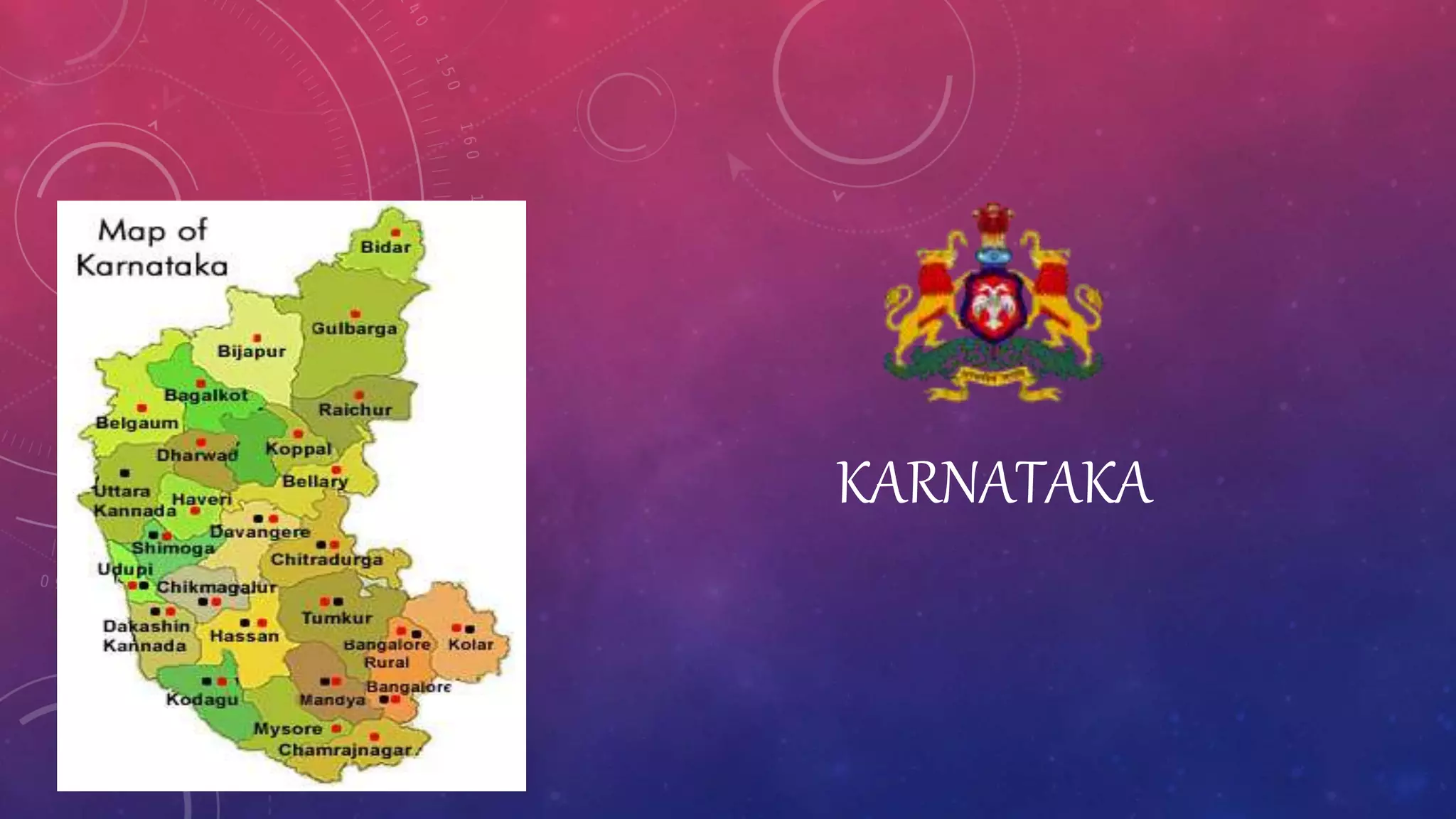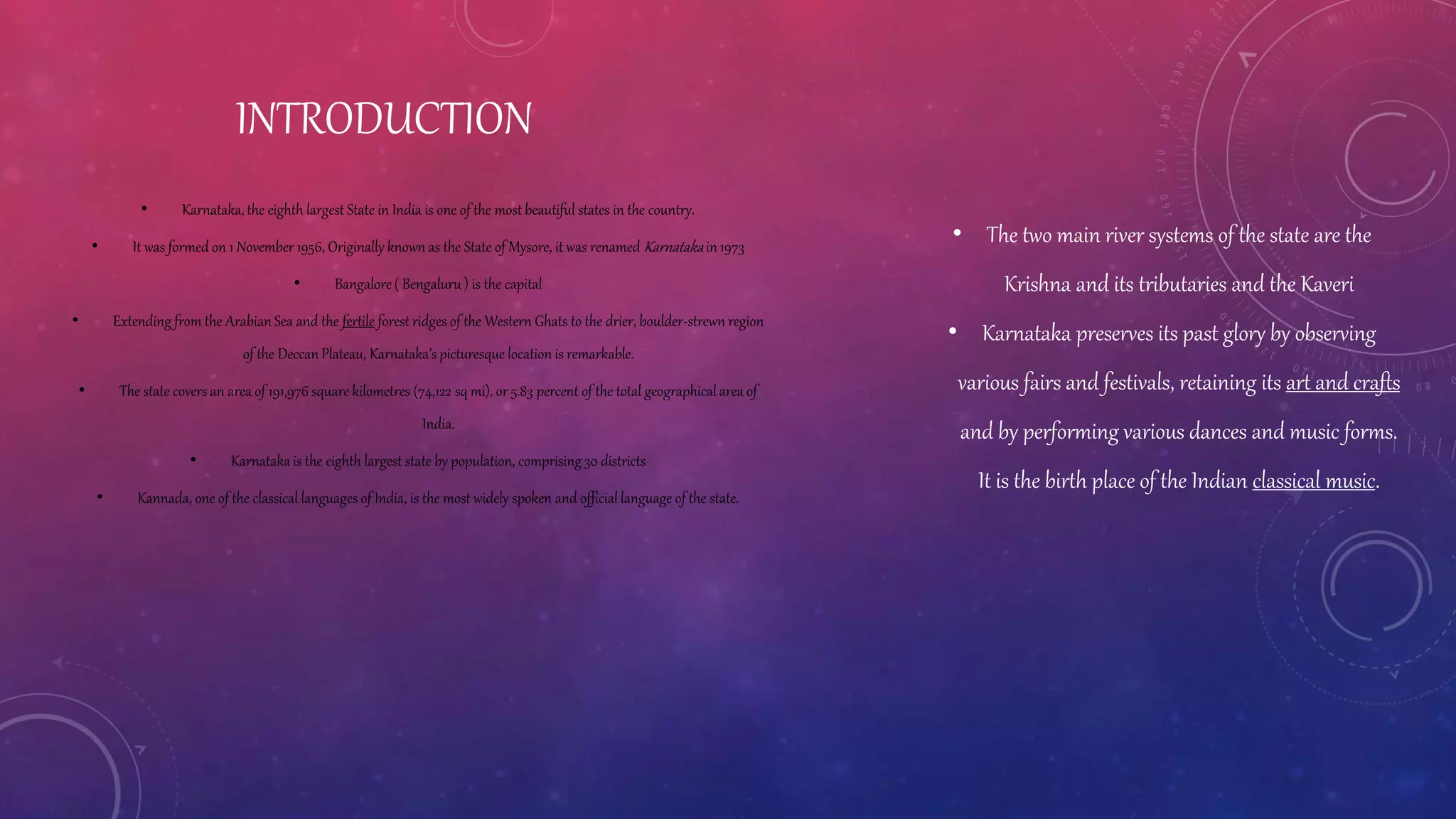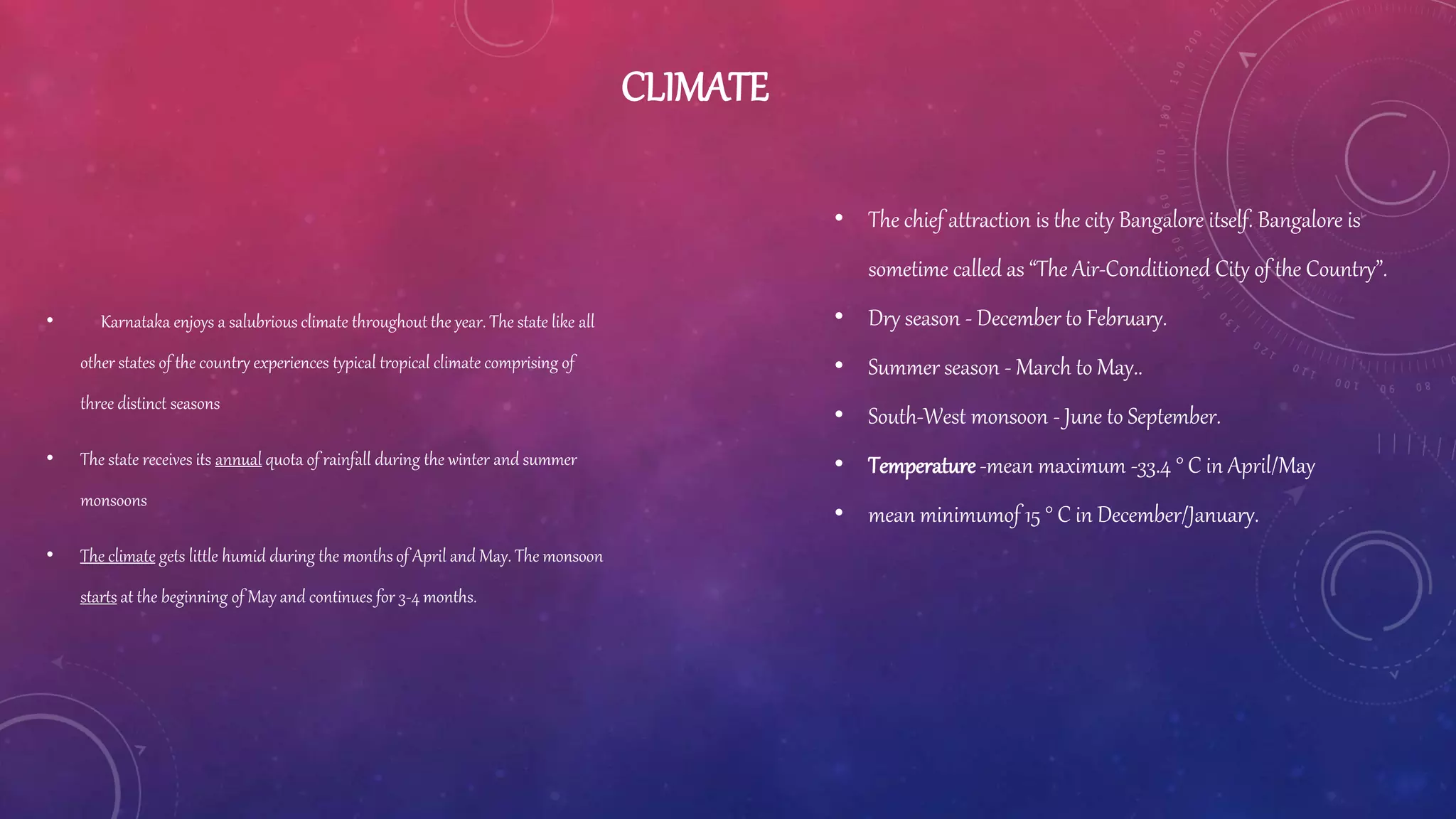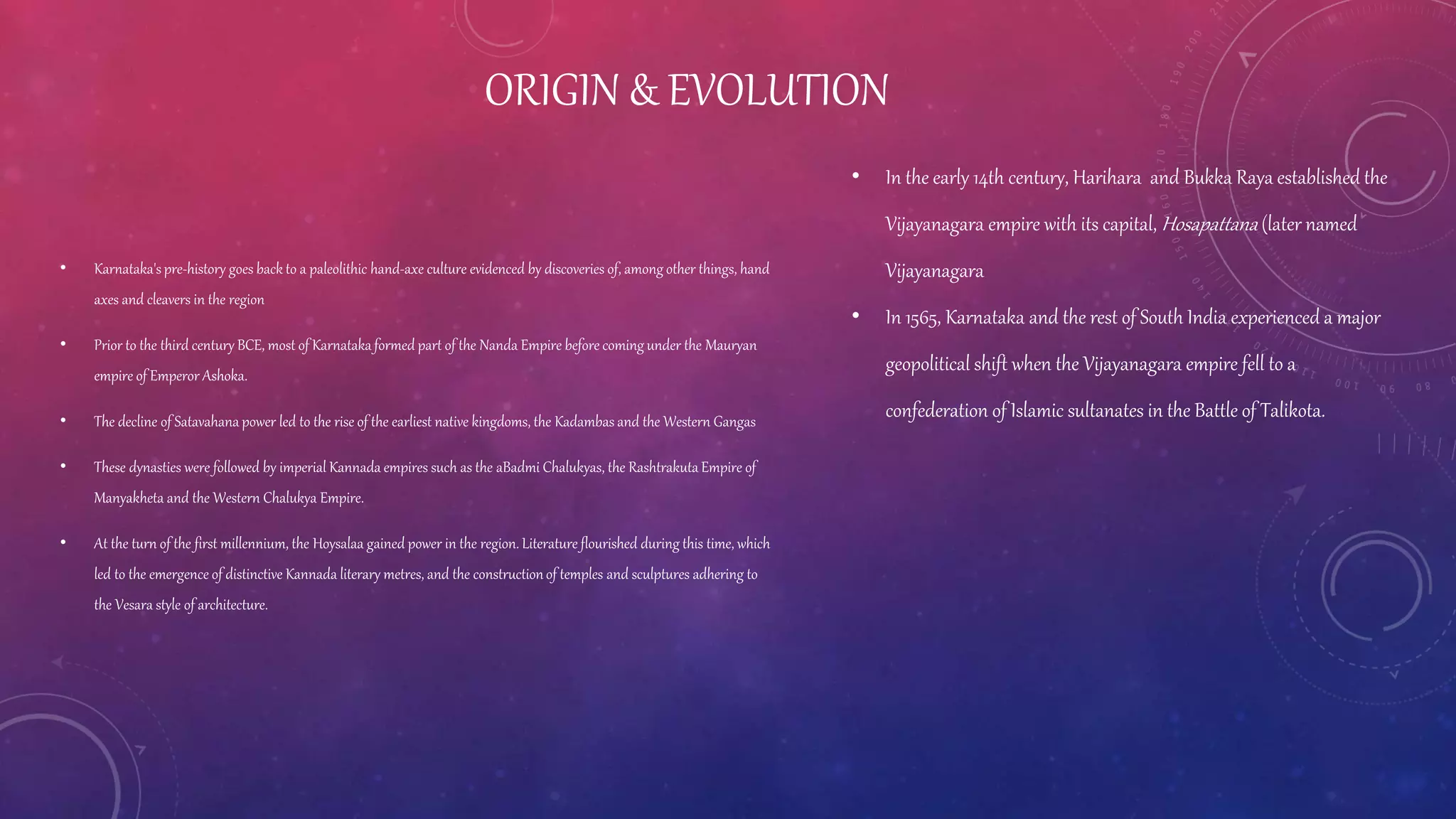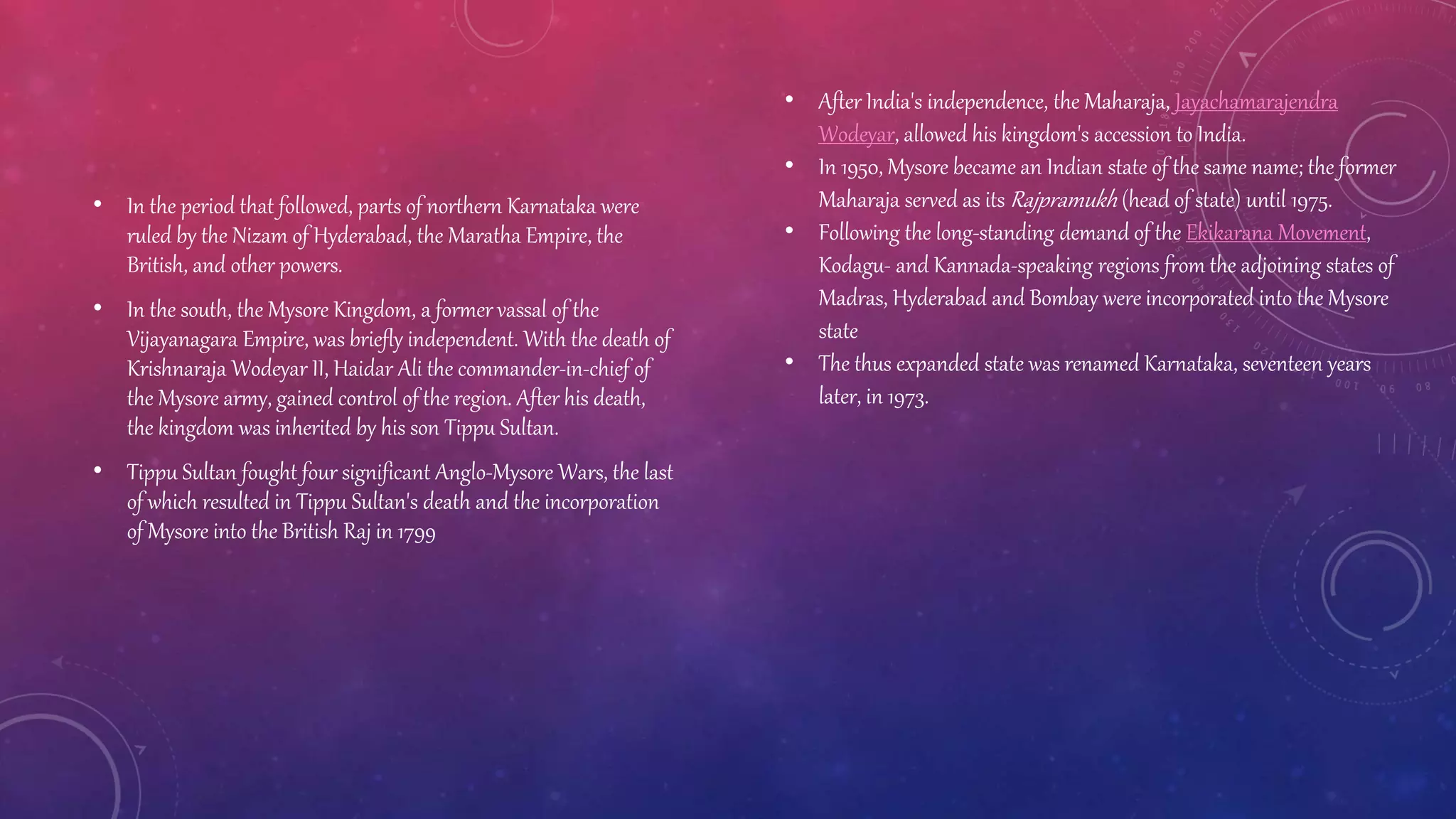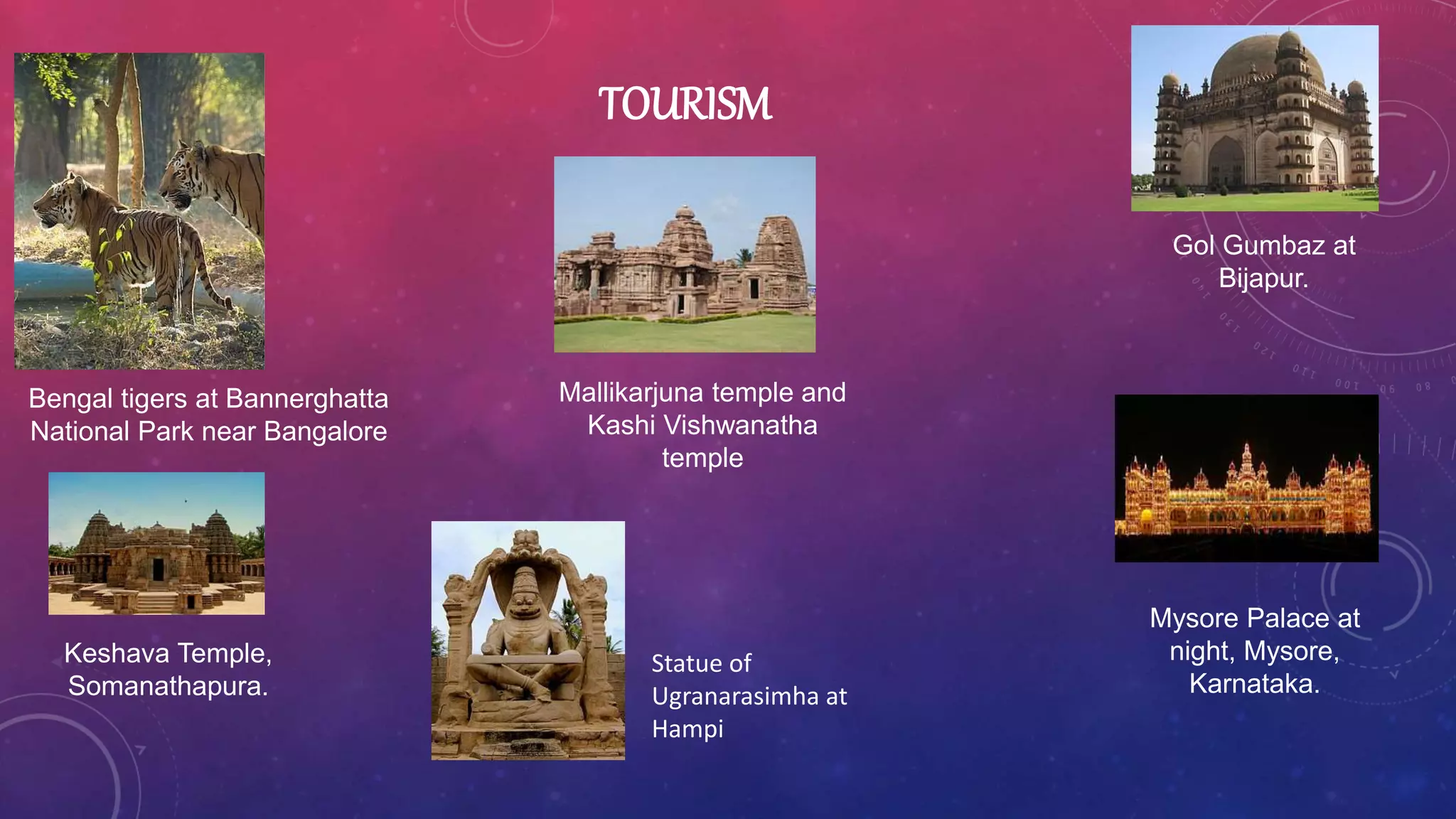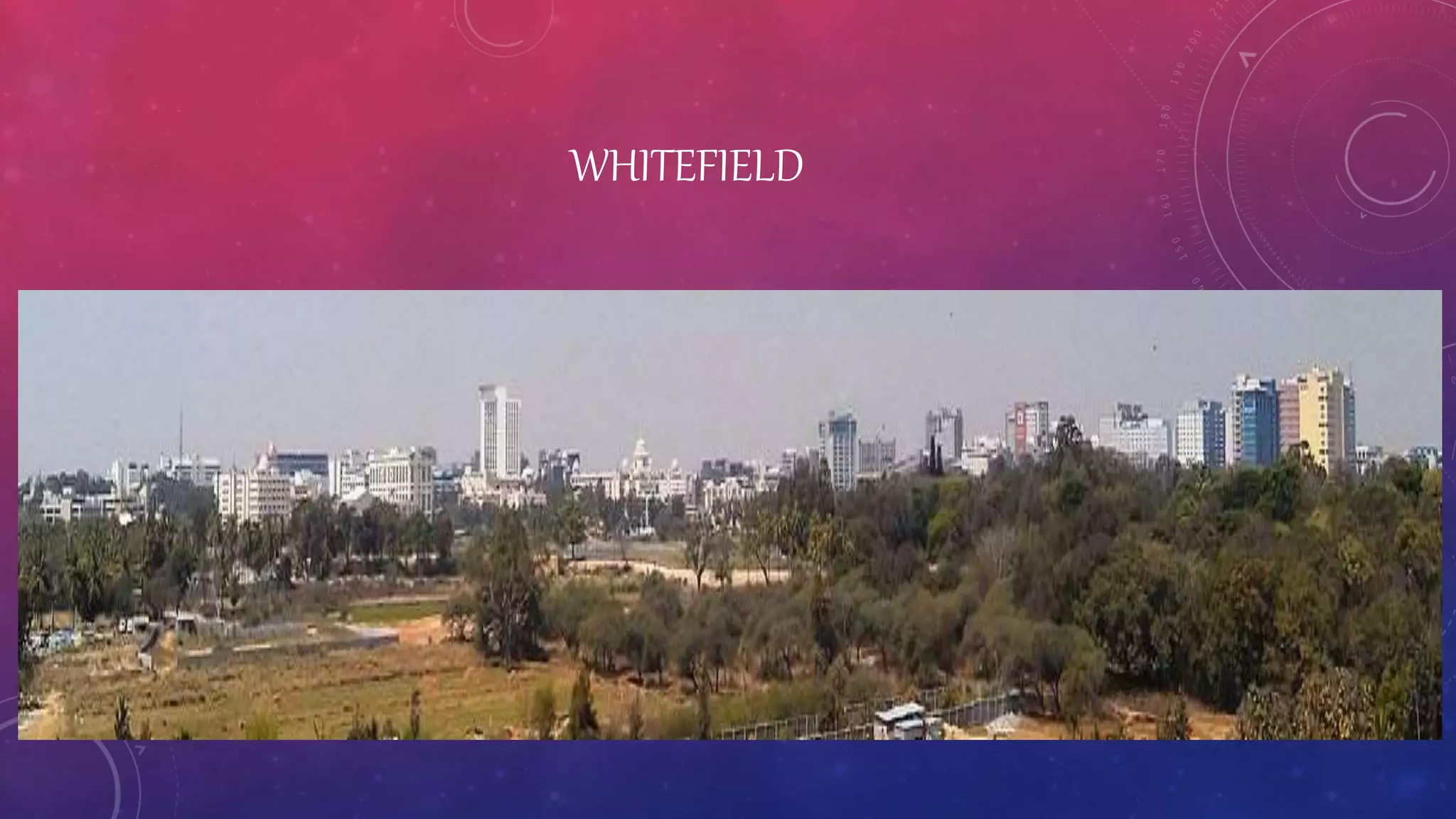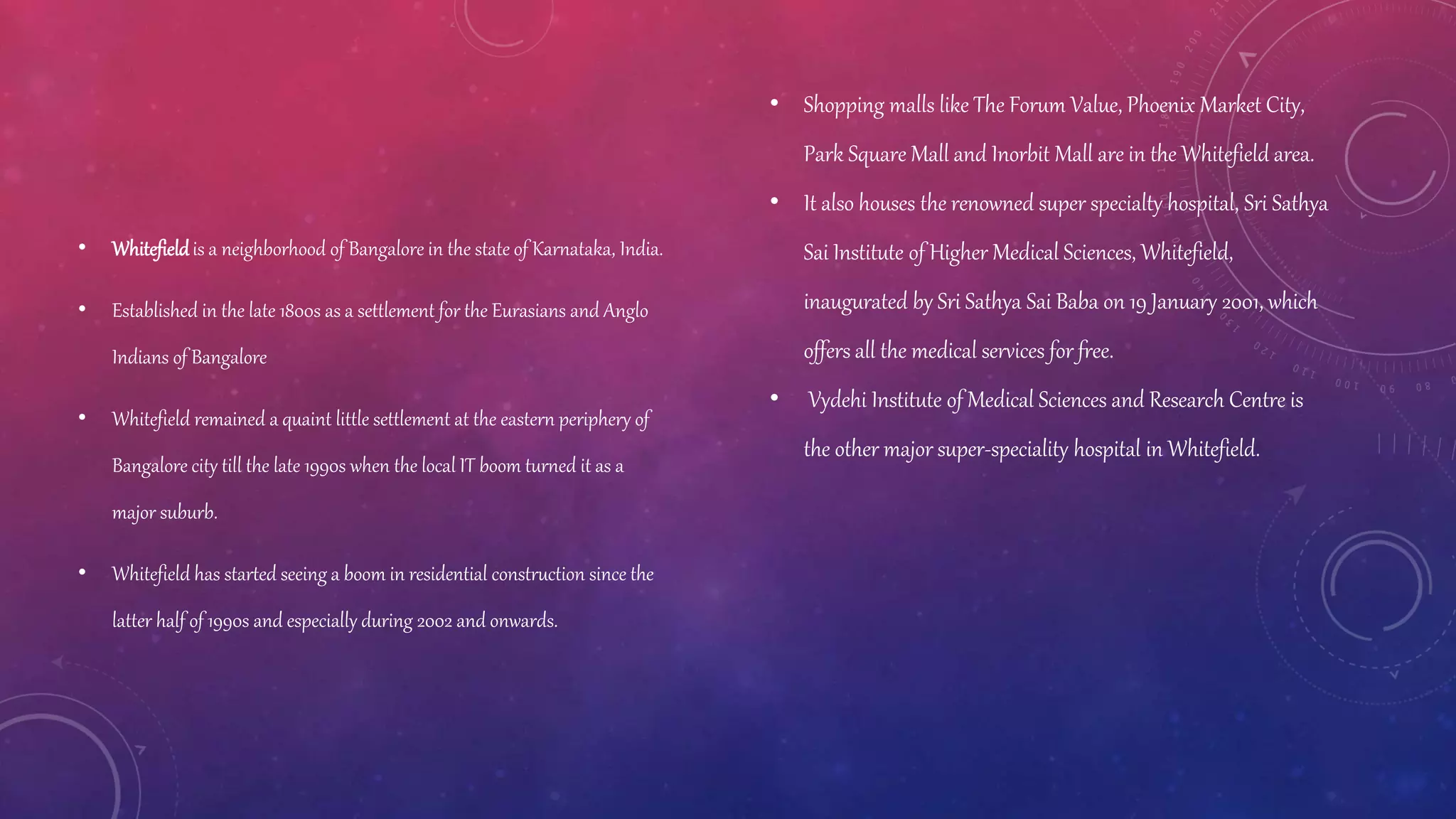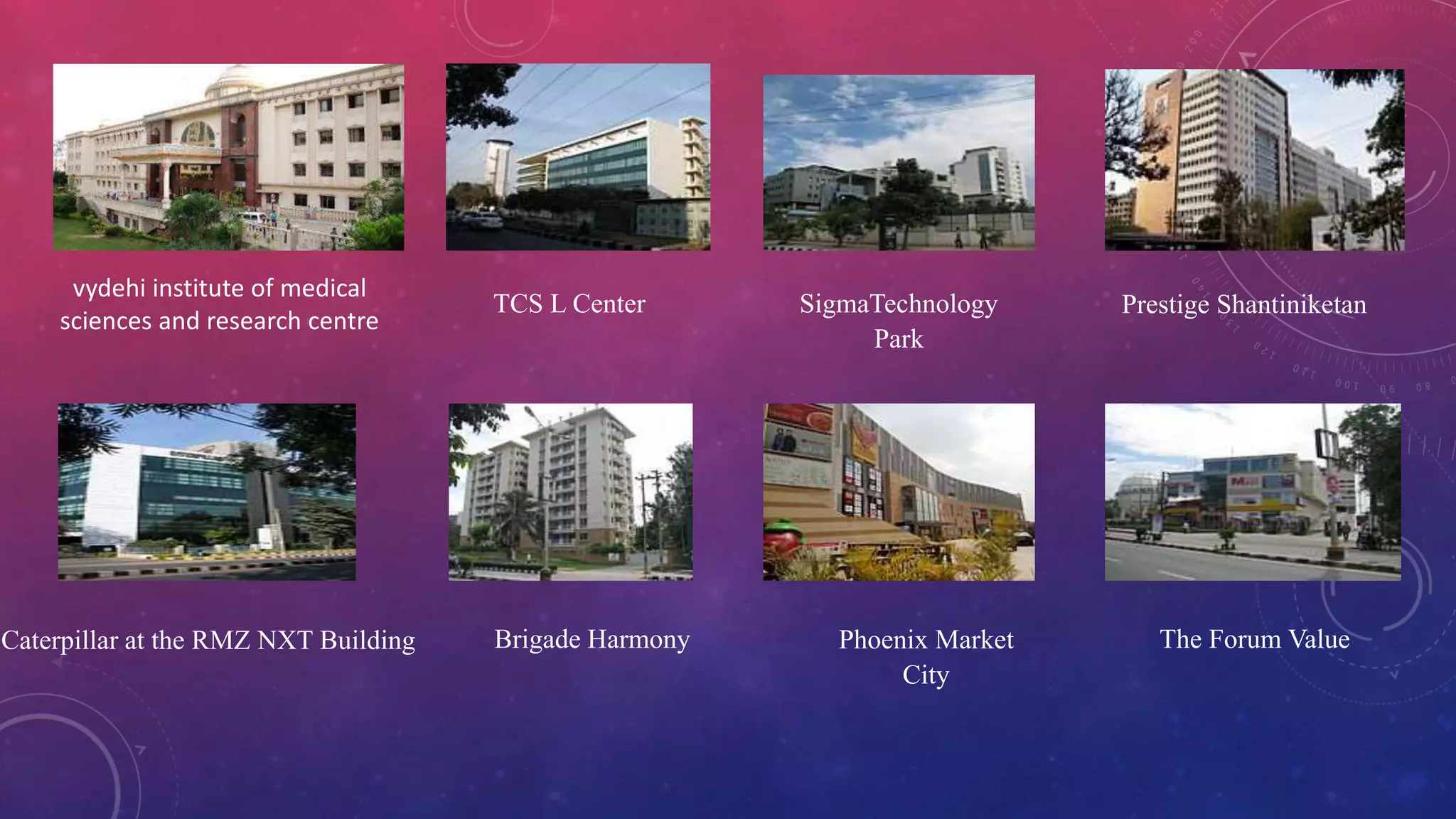Karnataka is a state in southern India known for its beautiful scenery and cultural heritage. It was formed in 1956 and has Bangalore as its capital city. Karnataka enjoys a tropical climate with distinct wet and dry seasons and is home to over 60 million people who primarily speak the Kannada language. Major rivers include the Krishna and Kaveri, and the state's history dates back to ancient kingdoms that left behind impressive architectural sites like Hampi. Tourism is an important industry focused around areas of natural beauty, historical sites, and the city of Bangalore, now a major tech hub known as India's Silicon Valley.
